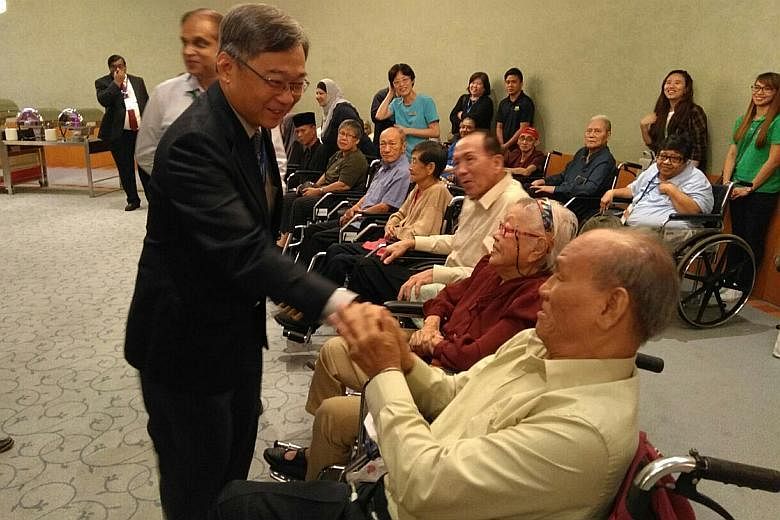SINGAPORE - A scheme launched last April to help patients manage their conditions after discharge from hospital has already helped about 8,000 people.
The Hospital-to-Home (H2H) programme aims to help patients with multiple medical conditions reduce their risk of re-admission by offering them services such as home nursing.
The programme pools manpower resources by consolidating existing transitional care schemes run individually by hospitals. It also zooms in on those who may need help in a more systematic way, to minimise the number of people falling through the cracks.
The scheme is part of a wider plan spelled out by the Government last year to shift healthcare from one centred on the hospital to one that caters to Singaporeans' needs closer to their homes.
"Our healthcare system was initially designed for a much younger population," said Health Minister Gan Kim Yong on Friday (Feb 2), noting that one in four Singaporeans will be aged 65 and above by 2030.
There is a need to move to a " seamless integration of care services organised around the patient", he added.
Mr Gan was speaking at the inaugural three-day Global Conference on Integrated Care 2018 at the Resorts World Convention Centre in Sentosa, attended by more than 1,600 people from 23 countries.
He said a way to better integrate care is to make funding more flexible, by moving away from per day or per visit funding towards funding the bundles of services needed for an event of care.
For example, the H2H programme is funded on a per episode rate to give flexibility for care providers to tailor services to each patient's specific needs.
The programme, which is run by the Agency for Integrated Care (AIC), has a more foolproof way of identifying patients who need help managing their conditions at home, said Mr Chern Siang Jye, group chief of AIC's Regional Engagement & Integration Division.
"Workflows in identifying patients for the programme are more structured...patients are more systematically identified and referred, based on their number of hospital admissions, medical history and age," he added.
This is unlike in the past when patients were identified for transitional care programmes based on medical workers' interactions with them.
Earlier pilots by individual hospitals have seen good results.
For instance, a study on 800 patients by the Singapore General Hospital in 2012 found that the transitional care pilot helped to reduce readmission rates by up to 30 per cent.
One patient who has benefited from the H2H programme is retired sub-contractor Choo Kim Sua, 67, whose diabetes has led to kidney failure and a double leg amputation.
A nurse and medical social worker provided home nursing and caregiver support and referred him to community care services.
"It is still stressful, but they taught us how to take take care of him and ourselves as well," said Madam Sim Poh Cheng, 61, who works part-time in a seafood restaurant and looks after her husband with a domestic helper.
The couple has two children but do not live with them.
In his speech, Mr Gan also noted that progress has been made in connecting social- and health-related services. The Care Close to Home programme for seniors in ageing rental precincts, has benefited more than 2,500 seniors, he noted.This will be expanded to more sites this year, from its current 11 sites, he said.


